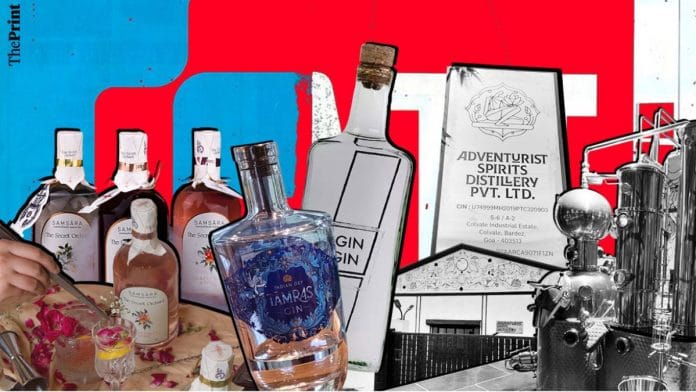There’s a renaissance underway in Goa. And it’s exploding in flavours and colours that boggle the mind. Gin, the rather stodgy juniper-based spirit, has re-emerged from the shadows. It’s taking over the shelves of liquor stores and supermarkets across India’s designated party capital, in a revival driven mainly by millennials and Gen Zs.
Goa’s gin renaissance or ‘gin-aissance’ is marked by new brands that are young, experimental and adventurous—much like their makers. These bespoke gins have their unique botanics, which young entrepreneurs brew in their own distilleries. Taking a cue out of Maharashtra’s playbook with its vineyard tours, one couple has even opened a distillery for gin-tasting events.
Most people behind this renaissance have no experience in the industry. Some have given up their consultancy jobs abroad to focus on the spirit, while others have relocated to Goa.
For them, gin is a labour of love—and curiosity.
“This is a coming-of-age moment for gin brands and customers in India,” says 27-year-old Aditya Aggarwal, founder of Samsara. Since he launched the craft gin brand in 2019, he’s expanded the range, and they are now available in Maharashtra, Goa, Karnataka and Delhi.
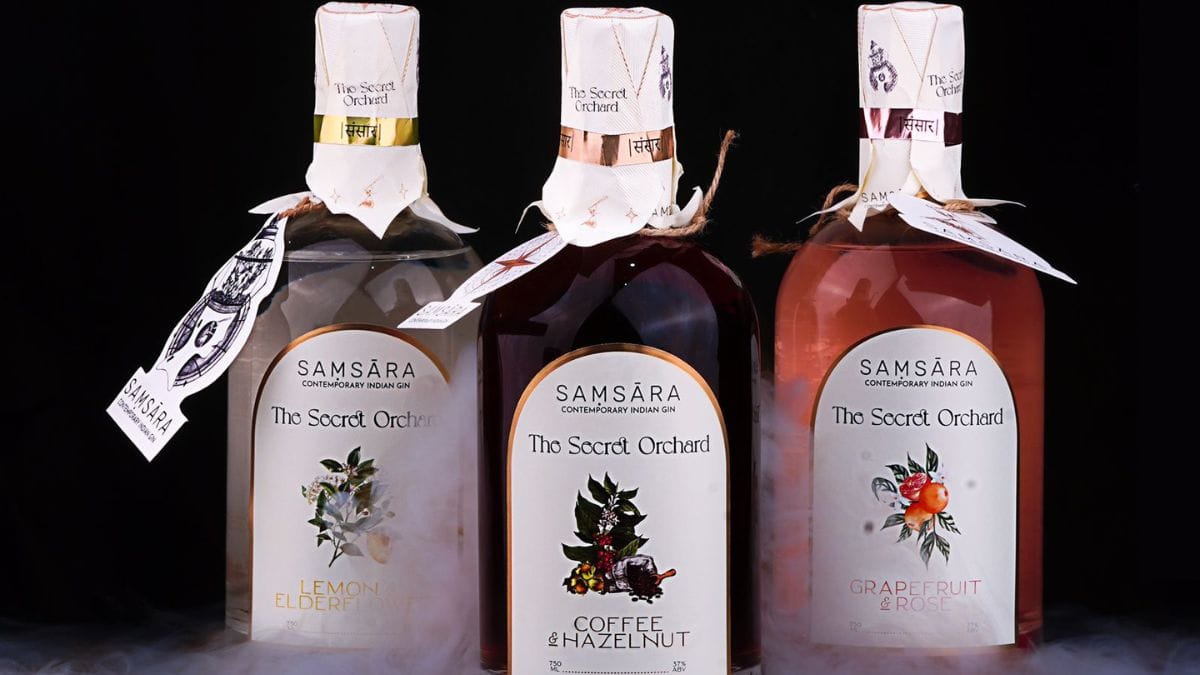
Screenwriter Devika Bhagat’s love affair with gin began on a cold London day 14 years ago. As she took her first sip in a warm bar away from the biting cold, she shifted her allegiance from vodka to gin. “I haven’t looked back ever since,” she says.
In 2021, her relationship with the distilled spirit bore fruit with the birth of Tamras, which she launched with her husband, in Colvale, Goa. The decision to produce small-batch, copper-distilled Indian Dry Gin in the coastal state was deliberate.
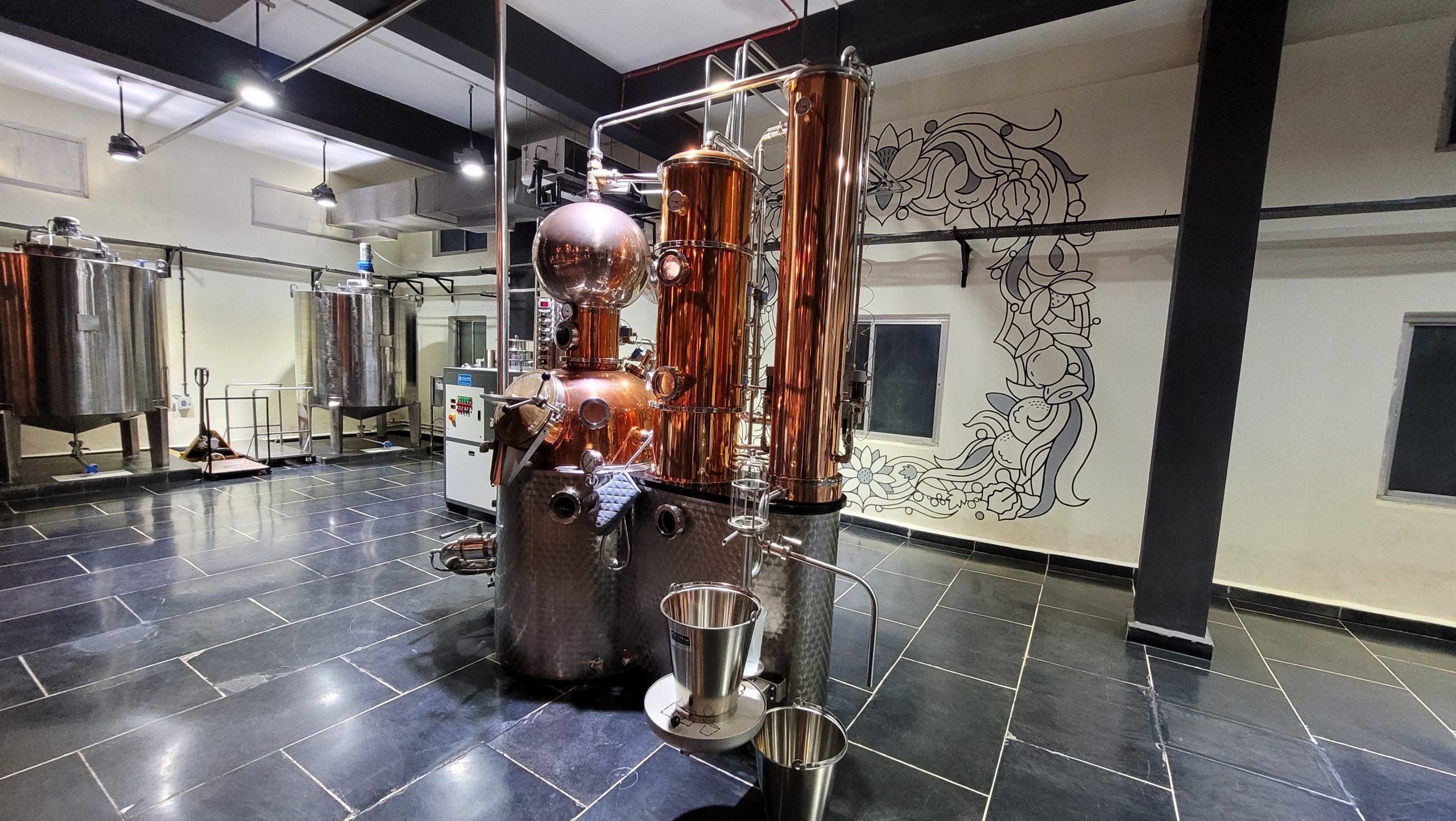
Goa is where many gin makers are gathering. At least 10 homegrown brands operate here.
Also read: World’s first ‘Chai-infused gin’ from Edinburgh has Assam connection
Pink, hemp or lotus
Goa’s craft gin makers aren’t just selling alcohol. They want to tell a story and offer consumers a new experience. Jin Jiji, an Indian Dry Gin brand based out of Goa, evokes the mysticism and magic of India by using tulsi as one of its botanicals.
“We set out on an expedition around India…We couldn’t resist adding tulsi, a fragrant leaf used in Indian Ayurveda and often regarded by Hindus as the earthly manifestation of goddess tulsi,” it says on the brand’s website.
Samsara embodies wanderlust, curiosity and self-expression, says its founder Aditya Aggarwal, who quit his consultancy job in Los Angeles to set up a base in Goa. “These traits define the youth in India who are increasingly curious about everything, and want more bespoke experiences.”
It was not enough to just order a cocktail. There has to be a story, and Samsara wants to fill that gap.
Aggarwal realised that there was no representation of Indian alcohol and culture in the global market. “Young people today want to experience bespoke, and we cater to that. The bottles of all Indian brands are also works of art,” he says. The brand’s pink gin, inspired by the pink city Jaipur, priced at Rs 1,850 for 750 ml in Goa, is a favourite among consumers.
The description of some of the gins is as complex as wine labels. The City of Pink boasts of a “light sweetness of fresh strawberries, rose and hibiscus, with a bite of juniper and mellow spice undertones”. Jin Jiji promises the “essence of India”, with wild juniper “foraged from the Himalayas”.
If City of Pink is delicate, then 24-year-old Shubham Khanna’s GinGin relies on the heft of hemp for a non-citrusy flavour. And the berries that Tamras uses for distillation are juniper from Macedonia instead of its slightly bitter Indian counterpart. It is simply a game of how far you can push the envelope in the use of botanicals, a feat well demonstrated by both Khanna and Aggarwal.
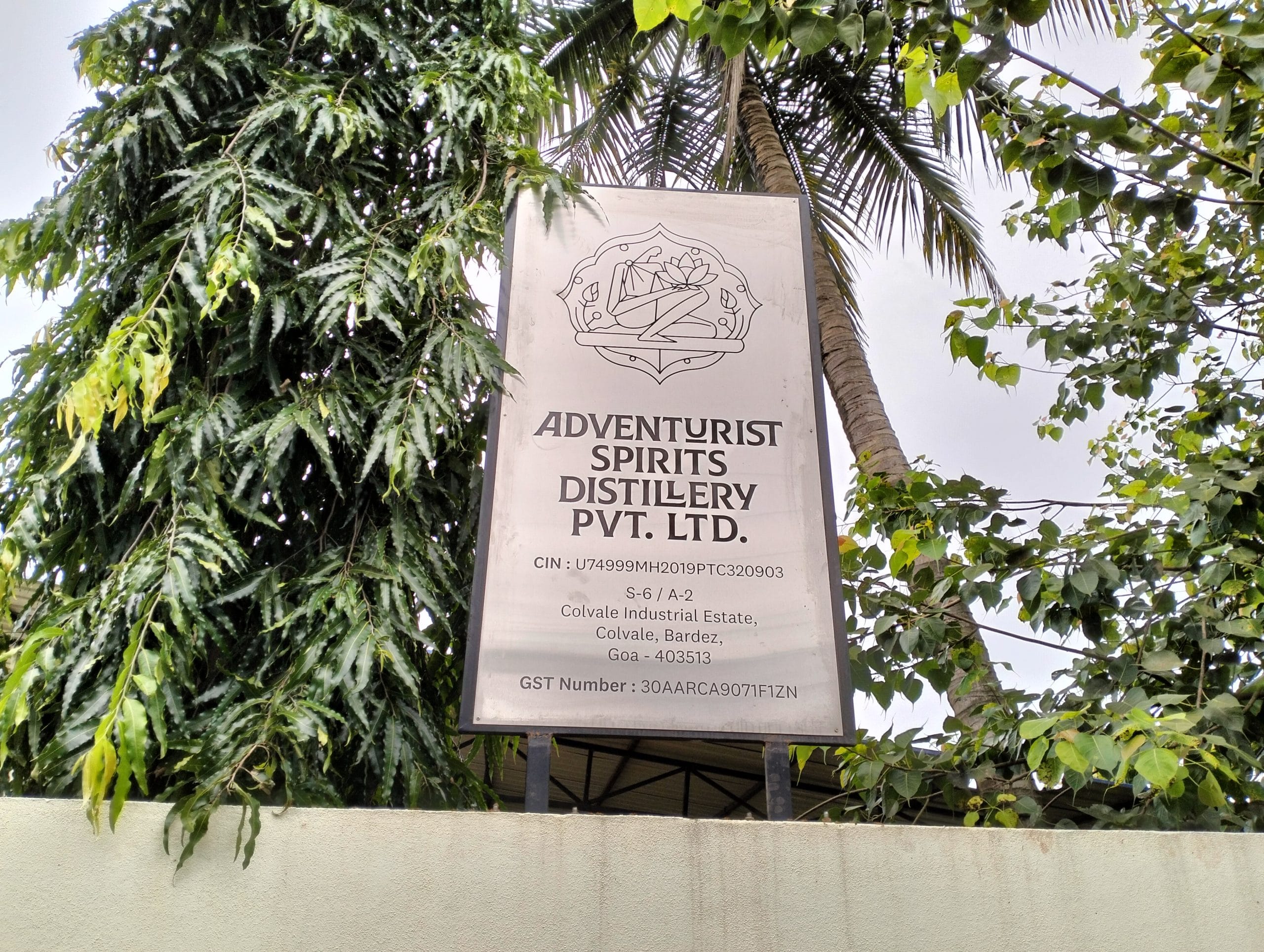
Devika Bhagat, 42, even converted her husband, film producer Khalil Bachooali to gin. With the launch of Tamras and Adventurist Spirits Distillery, they are the newest entrants in the market. The couple’s marketing strategy is either retail or pop-ups given that Tamras is expensive. Priced at Rs 1,950 for a 700ml bottle, it’s not the first option for cocktails in Goa’s smaller shacks whose USP is affordable alcohol. But those looking for good gin are willing to attend pop-ups or just buy a bottle to take back home.
Many homegrown brands in the state source their base spirit from other distilleries, but Tamras is produced in small batches in a distillery owned by the couple. It allows them more control over the concoction and taste.
Not one to give up an opportunity, Bhagat and her husband also organise gin distillery tours, another first for Goa, for Rs 1,200 per person. A shelf in the shape of its signature glass bottle with the bright blue design etched on it adorns the foyer of the distillery. The roughly hour-long tour conducted by distillery manager Louis Judavez ends with a signature gin-based cocktail you can choose from, paired with a platter of cheese and crackers.
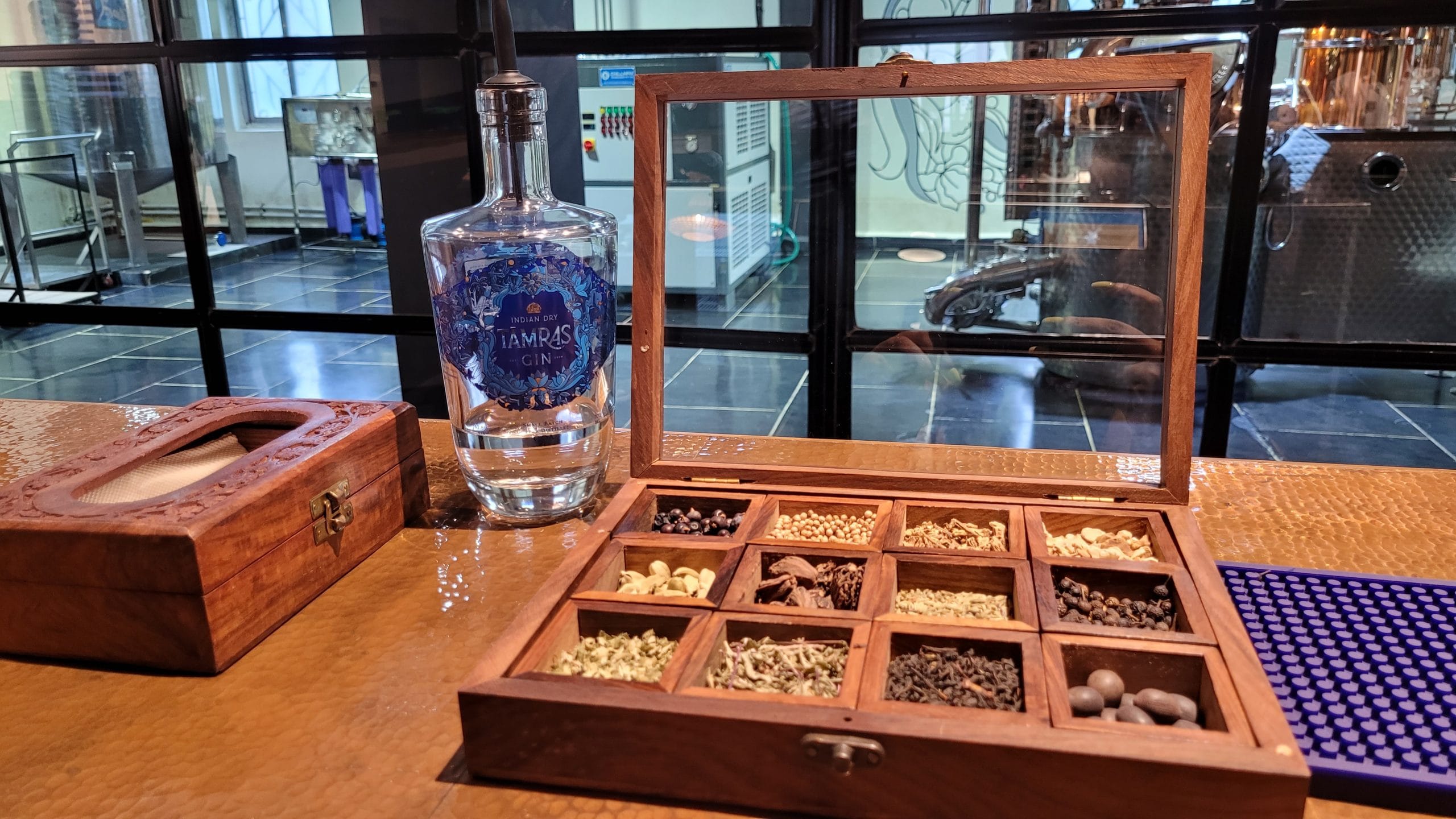
The attention to detail is the distiller’s speciality, as is the copper pot distillation. While other gin makers mostly rely on Himalayan juniper berries, Tamras wanted to ensure the berries come from Macedonia, to retain flavour. The base spirit is made from Basmati rice procured from Punjab in a 230-litre German Müeller copper still named Odysseus.
Also read: Shaken, stirred & appreciated — these clubs are making connoisseurs of India’s liquor consumers
Made in India
For most entrepreneurs who see their endeavour as a journey, Goa was the obvious choice to set up camp. With friendly excise laws and a steady influx of tourists, the coastal state checks all the right boxes. Local wine stores and supermarkets have also seen a rise in demand for bespoke gin.
“We have sold 8,000 litres of gin in the past nine months alone. That is four times the previous sales record,” says Vishvendra Singh Tomar, owner of GA 11 wineshop at Goa’s Morjim beach. Where earlier a small shelf was assigned for gin, and that too for imported brands such as Beefeater or Tanqueray, local gin bottles now lord over cabinets in many shops.
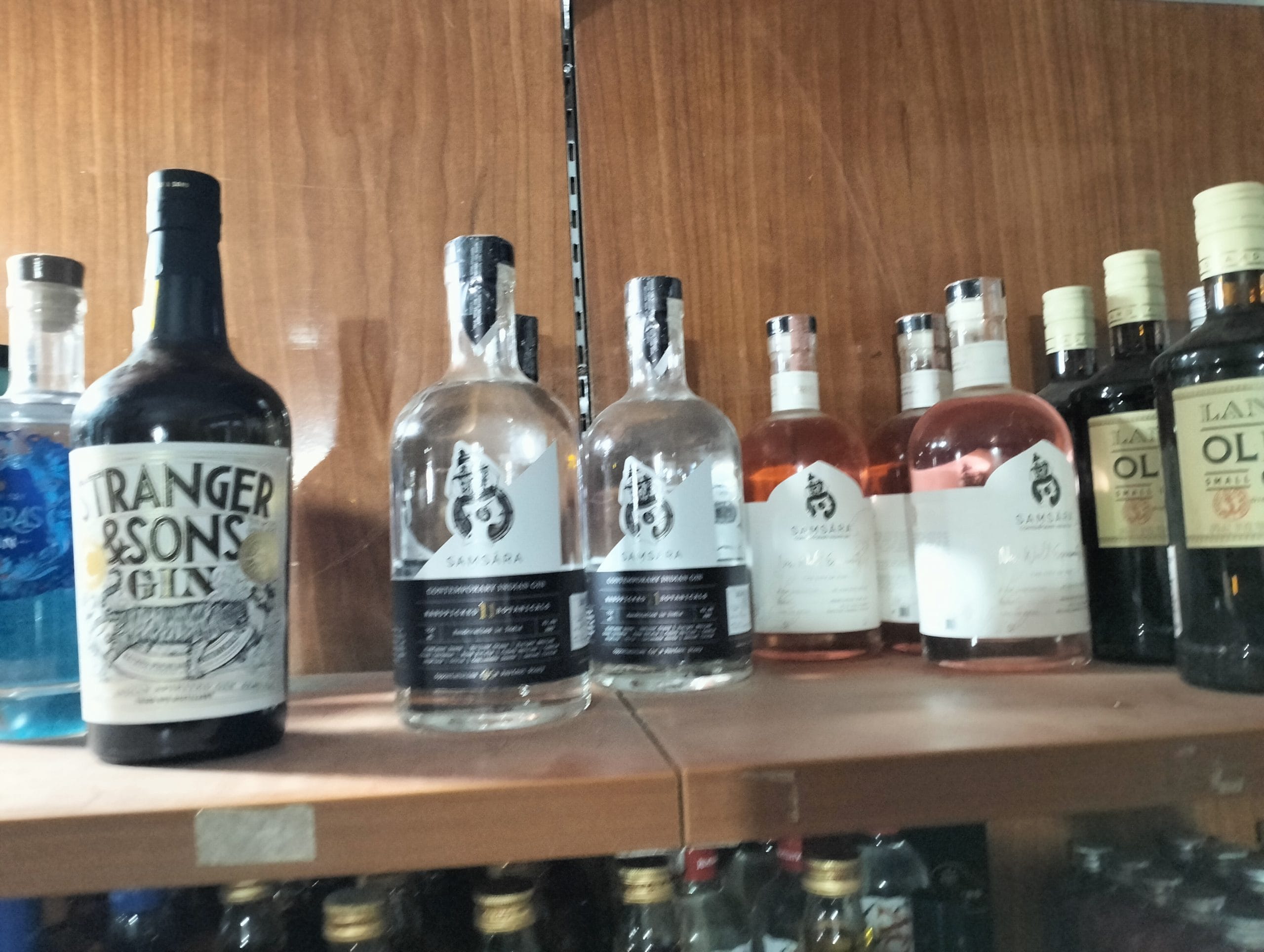
In 2020, in the first year of the pandemic, India’s gin sales dropped by more than 50 per cent, but at the same time, premium gin sales rose by 16.9 per cent. What’s more, Indians prefer made-in-India gin. An Economic Times report noted that small batches of craft gin accounted for nearly half of the mass-premium segment. In 2021, sales of nine-litre cases rose to 1.68 lakh from 80,400 in the previous year, according to a report by global market analysts IWSR.
“The Indian craft category is expected to go from strength to strength, with the strong likelihood of more brands and more investment, from large and small players alike,” said IWSR market analyst, Jason Holway, in the report.
It’s also cheaper to set up a distillery in Goa. In order to promote tourism, the state has consistently kept tax on liquor pretty low. “Goa has very relaxed excise laws compared to the other states of India. You have a ready market in the state–people from all over India come to Goa, and even abroad. Where else will you find such a wonderfully diverse market for food alcohol?” she adds.
Also read: ‘Slash alcohol tariffs from 150% to 75% under India-UK FTA,’ demands international liquor body
New age converts
For Gen Zs and even millennials more familiar with vodka, whisky and wine, gin is a ‘discovery’.
“My whole world changed,” says 21-year-old Riya Mehta dramatically after she tried Samsara’s pink gin in Goa. Riya, who has been trying out different types of alcohol since she was legally allowed to drink, said it tasted infinitely better than cranberry vodka, her choice of alcohol. “It is refreshing and light, and does not give that heavy feeling vodka does after a few drinks. I am a convert now.”
The irony is that gin has been around for hundreds of years but it was known more for its so-called medicinal properties. In 1815, towards the end of the Napoleonic wars, Gebhard Leberecht von Blücher, a Prussian field marshal and a commander during the Napoleonic Wars, fell off his horse while on his way to help Wellington in the battle of Waterloo. He was apparently revived through a rub of gin and onion. Blücher ended up assisting Wellington to create history by defeating Napoleon.
In India, the British brought in gin to mask the bitter taste of quinine, mandatory to prevent malaria. The taste used to be masked by water, lime and sugar. More than two centuries later, the domestic gin market, which was almost non-existent five years ago, is experimenting with different flavours.
Also read: 53rd IFFI in Goa: MIB invites entries for ’75 Creative Minds of Tomorrow’
Game of botanicals
Experimentation is the name of the game today. GinGin, India’s first hemp craft gin, is the brainchild of 24-year-old Shubham Khanna. The Delhi-born Punjabi who shifted to Goa a few years ago loves his alcohol “like any true-blue Punjabi,” he laughs. It was the laidback Goan culture that prompted him to first settle there and then think of his own band.
GinGin was the product of two years of intensive research and 40 recipes. It is a single-shot distilled hemp gin comprising nine botanicals—hemp, Himalayan juniper, coriander lavender, rosemary, caraway seeds, cinnamon, lemongrass and butterfly pea flower.
Khanna travelled to New York to learn the art of gin-making before he created his signature gin. He started by leasing a distillery before opening his own in Cuncolim. A 750-ml bottle of GinGin is priced at Rs 999. In Goa, it is only available at For The Record bar where Shubham also did most of his tasting before developing his recipe.
Meanwhile, at Samsara, Aggarwal experiments with his botanicals constantly. His latest offering, Fruit Orchard, which was launched on 1 September has flavours such as grapefruit and rose, lemon and elderflower, and coffee and hazelnut.
Tamras also boasts of being one of the very few gins that use a whole citrus fruit, sweet lime, instead of peels to lend that unique flavour. The other botanicals are also very desi–green cardamom, lotus flower, lotus seed, ‘mosambi’ (sweet lime), Indian lemon, Nilgiri tea, and Indian mint.
Desi at heart and global in temperament, Indian dry gins are not just here to stay. They are gunning to replace good old vodka as the most favoured distilled spirit in the country. But with the eruption of so many new craft gin labels, the paradox of plenty could work against this growing market.
(Edited by Ratan Priya)



